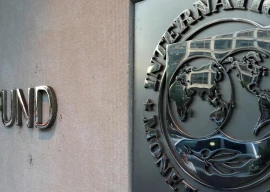
Organising ideation workshops are a type of best practice that helps stimulate out of the box thinking and inspire creativity within businesses. However, despite their overall usefulness, there is room to considerably improve their outcomes. Specifically speaking, optimisation methods known as bandit strategies can be embedded within innovation meetups to boost their outputs. This novel approach brings together benefits of both brainstorming as well as bandit techniques and the process is referred here as banditstorming.
An ideation session typically consists of a dozen or so individuals along with a director that leads the class through its three main stages.
The first one requires the coordinator to specify the problem that the attendees are attempting to address. For example, a design team could be working on crafting a new logo for their company. Alternatively, it could be stakeholders from marketing who are keen to develop a campaign that promotes their product. In general, the participants are expected to possess the domain knowledge to understand the issue and be able to propose various solutions.
Once the problem is explained to the audience, the coordinator moves to the second part of the agenda. This typically entails directing a brainstorming session in which the participants are thinking creatively to come up with different proposals. At this instance, the facilitator ensures that all submissions are taken into consideration and none of them are prematurely censored. All individuals are encouraged to think freely, and at the conclusion they are often asked to post their solutions on a common board. In summary, this phase is all about encouraging divergent thinking and gathering various suggestions without undue prejudice.
Finally, the focus of the last part of the session is to consolidate and prioritise the suggestions from the previous stage. For example, the attendees could reduce the complexity by voting to narrow down the list. At times, both budgetary and timing constraints are also considered to prune away certain proposals. Additionally, the coordinator could also minimise clutter by merging similar ideas together into different clusters. In summary, several convergence tactics are adopted that let the members strike out least desirable options and choose the ones that are most appealing.
Although ideation workshops are effective as they are rolled out, I believe enhancements can be made by integrating bandit solutions during their execution. The word bandit is a pseudonym for a slot machine and the optimisation refers to statistical techniques that lets a gambler make maximum wins. Research indicates that the best approaches are iterative in nature in which the money is divided across various trials. In the first round, a player initially selects a random set of machines and allocates equal funds to each of them. During the next cycles, the recommended approach is to skew the distribution by increasing investment in those bandits that provide the best returns. This process is repeated, and the spread undergoes nonstop refinement as more results are accumulated from each of the trials. In this way the winnings are optimised since the bulk of the funds are utilised on machines that provide the best returns, whereas, poor performers are continually side-lined.
Adoption of banditstorming within innovation workshops will enable generation of ideas that are built on the foundations of winning suggestions. The overall approach will be very similar to the way trials are conducted within optimised bandit strategies. The distinctive feature of the enhanced workshop is that it will consist of repetitive phases of both divergent and convergent stages. Therefore, at the start of the first iteration, the attendees will independently propose their solutions and then collectively participate in a ranking process to determine the degree of prioritisation. To keep the voting process fair, the members would rank options other than the ones that they have submitted.
As the results of the first round of voting are shared with the participants, they will be asked to initiate a second phase of submissions by taking into consideration the winning and the losing propositions. Logically speaking, most individuals will determine distinctive attributes of the leading options and build that into their next recommendations. Hence, the newer solutions are likely to draw heavily from specific components of previous wins that stood out against low scoring proposals. These latest propositions will be put to vote once again, and the results would be shared for yet another round of ideation process. A few cycles such as the above will be carried out until a form of evolutionary convergence is noticed and called out by the coordinator.
As a basic example, imagine a group of ten executives working to develop a simple tagline for their company. Initially, they would independently submit their divergent ideas and the process of voting will take place to prioritise their submissions. As the results are shared amongst themselves, each participant will evaluate the scores independently to come up with their next submissions. In general, the newer versions are likely to be influenced by higher scoring previous options. In other words, the next round entries are likely to possess subparts of high scoring submissions of the previous cycles. Therefore, after a few iterations, the versions will increasingly congregate around combinations of those features that consistently drive higher tagline rankings.
In terms of mapping the above to the bandit approaches, every submitted proposition is akin to a slot machine and the ranking represents its respective returns. Overall, the methodology ensures that the new proposals are drawn largely from those ideas that have fared well in the previous rounds. In that way, every new cohort of proposals are skewed towards components of winning propositions and the losing designs are successively deemphasised. This enables the design to evolve towards the optimum as participants explore different combinations of winning propositions within each successive trial.
The traditional ideation workshops consist of one-off brainstorming sessions followed by prioritisation exercises. This approach is prone to premature convergence as the solutioning process does not iteratively benefit from attendee feedback. Hence, it is proposed that innovation meetups incorporate a new banditstorming process that enables the results to successively mature and optimise over cycles of feedback received from the meeting participants.
Published in The Express Tribune, June 8th, 2021.
Like Opinion & Editorial on Facebook, follow @ETOpEd on Twitter to receive all updates on all our daily pieces.


































COMMENTS
Comments are moderated and generally will be posted if they are on-topic and not abusive.
For more information, please see our Comments FAQ